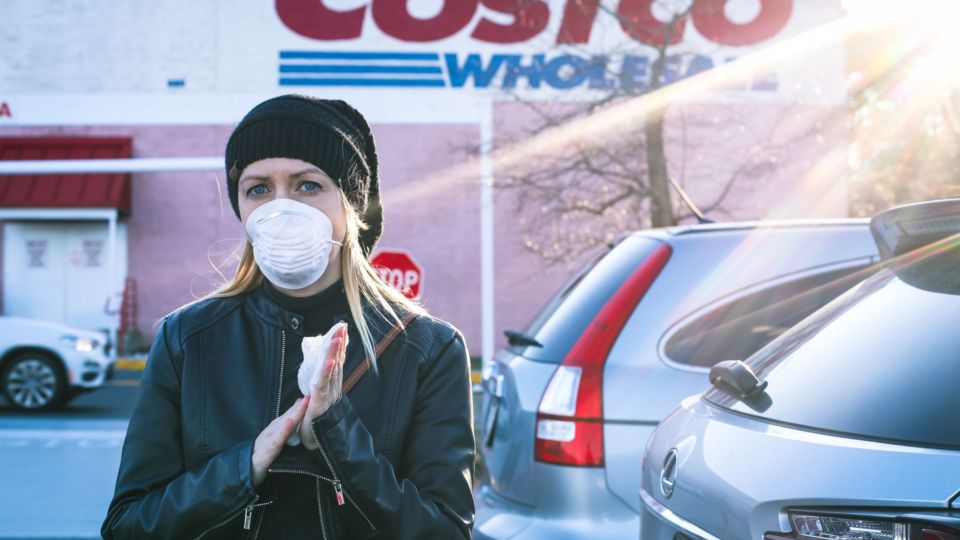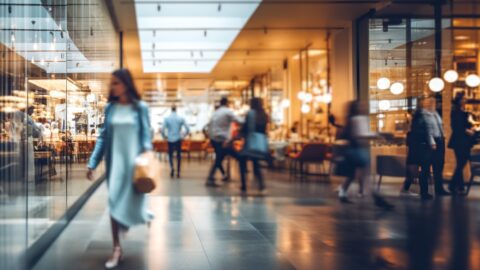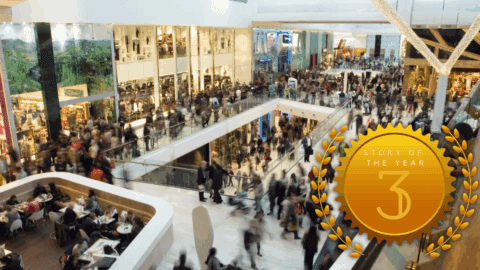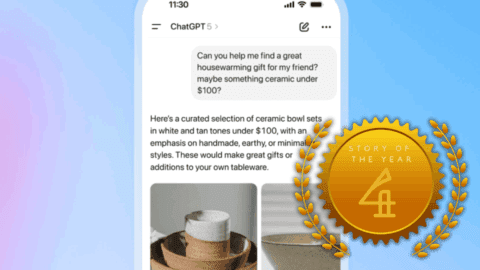The spread of the COVID-19 coronavirus in the U.S. is already beginning to affect retailing, but the news isn’t all bad: while shopping centers in affected areas are feeling the impact, e-Commerce and select product categories are seeing sales spikes. Additionally, some retailers are actually seeing significant traffic and sales bumps, as shoppers stock up or adjust their habits to limit the number of trips they make to public spaces.
“The spread of COVID-19 appears to be an unprecedented event and so it is difficult to make predictions,” said Taylor Schreiner, Director at Adobe Digital Insights in an interview with Retail TouchPoints. “That said, disinfectants and other health-related consumables will likely continue to sell rapidly as long as concerns about the disease persist. We’re keeping a close eye on other consumables like groceries and household goods: we may see a shift to online shopping for those items if people become reluctant to go to stores as often.”
Some of the product categories that saw the largest sales growth in February compared to January included:
- Virus protection (hand sanitizers, gloves, masks and anti-bacterial sprays): Up 817%;
- Over the counter drugs: Cold, cough and flu up 198%, pain relievers up 152%;
- Online sales of toilet paper: 186%;
- Non-perishables and shelf-stable items: 69%; and
- Emergency supplies and equipment: 58%.
Effects On Shopping Centers And Retail Verticals Varies Wildly
Traffic at shopping centers may trend downward as the COVID-19 outbreak spreads, but the full impact isn’t being felt just yet: four major malls examined by Placer.ai saw 13.3% year-over-year visit growth in February.
Both the Galleria in Dallas and Aventura Mall near Miami saw traffic upticks even during the final days of the month, and while The Westfield Garden State Plaza in New Jersey saw a drop on the final Thursday, visits jumped the very next day. Traffic at the Woodfield Mall in Illinois fell both days, but the Friday decline was limited.
However, mall traffic in areas where the virus first appeared reflects a darker picture. The Westfield San Francisco saw a 39.8% drop in baseline visitors on February 28, 2019 and a 30.1% decline on March 1, compared to the baseline for traffic from January 2019 through February 2020. These weekdays already had trended downward in the past, but the losses were greatly exacerbated this year.
In contrast, big box club stores saw a large spike in visits. Costco saw traffic rise 71.7% above baseline on Feb. 29, compared to a 45% increase over baseline traffic on the equivalent Saturday in 2019. Sam’s Club visits rose 95.3% above the baseline on the same day, compared to 77.3% the previous year.
One area where the sales bump was slightly disappointing was healthcare: CVS saw visits on Feb. 28 rose just 13.6% above the baseline, which was below the 14.3% increase on the equivalent Friday in 2019. However, CVS may play a larger role as the outbreak continues: Aetna, which CVS purchased in November 2018, is waiving co-pays for COVID-19 related diagnostics, sending diagnosed members care packages and proactively reaching out to at-risk customers to support efforts to control the spread.
Retailers are starting to look out for their staffs as well: Trader Joe’s is giving associates additional sick time to help them stay healthy, according to Business Insider. Associates with a respiratory illness can have up to seven days of sick leave reimbursed by their manager.
Coronavirus Could Cause A Permanent Shift Toward Grocery Delivery
As the spread of COVID-19 causes shoppers to look for ways to cut back on shopping trips, e-Commerce players are likely to see their sales rise. This scenario already is playing out for e-Commerce grocery company Farmstead, which services the San Francisco area.
“We are seeing a lot of customers coming in and placing orders a lot more frequently than before,” said Pradeep Elankumaran, Co-Founder and CEO of Farmstead. “Week-over-week, we’re seeing anywhere from 20% to 40% and even 50% growth on some days. We are seeing the stockpiling you keep hearing about, like pantry items, but we are also seeing a lot of people buying perishables.”
The interest in perishables isn’t a surprise to Elankumaran. He noted that Farmstead sources local products, meaning the supply chain hasn’t been impacted, and that its fruits and vegetables have been handled by fewer people than their supermarket equivalents, which also may be a draw. Grocery store produce is regularly touched by other shoppers, while warehouse produce remains undisturbed until it’s packed for shipment.
The company also has adjusted its predictive models to better predict demand in the coming weeks, which should help prevent over- or understocking certain goods. This, along with purchase caps on certain items, have helped Farmstead maintain a steady inventory level despite the sudden fluctuation in orders.
There’s a good chance that the e-Commerce growth driven by the coronavirus may translate into a permanent sales increase, according to Elankumaran. He noted that Farmstead already excels at customer retention, and one of the barriers to acquiring new customers is giving them a reason to try delivery over their usual store visits.
“This happened in China a while ago,” said Elankumaran. “The last time they had a pretty big outbreak was around the time delivery started picking up. It remains to be seen if it’s going to be permanent, but it’s hard to go back to going to a store after you’ve had the convenience of having it delivered to your doorstep, and we believe our products are also being handled much more hygienically.”
BOPIS May Provide The Best Of Both Worlds During The Outbreak
Retailers that can merge brick-and-mortar and online options will be particularly suited to weathering the COVID-19 outbreak. Buy online, pick up in-store services (BOPIS) can limit the time consumers spend in public areas, and could continue operating even if home delivery systems come under strain, according to Schreiner.
Consumers already are shifting towards these services: year-over-year growth of click-and-collect shopping grew 28% in February compared to 18% in January, according to data from Adobe Analytics. This trend lays out a potential survival strategy for retailers to follow as coronavirus concerns grow: make sure your products are as accessible to the consumer as possible.
“If predicting how COVID-19 will spread is hard, then anticipating the best retail response might be even harder,” said Schreiner. “To the extent that an online retailer thinks that the concern will continue and spread, then they should consider increasing stocks of consumables and moving them closer to where they can be delivered or easily picked up. If more people are working from home, dealing with kids home from school, or just practicing social distancing, they will need more household goods that either can be quickly delivered or that are easily accessible nearby with a minimum of human interaction.”













